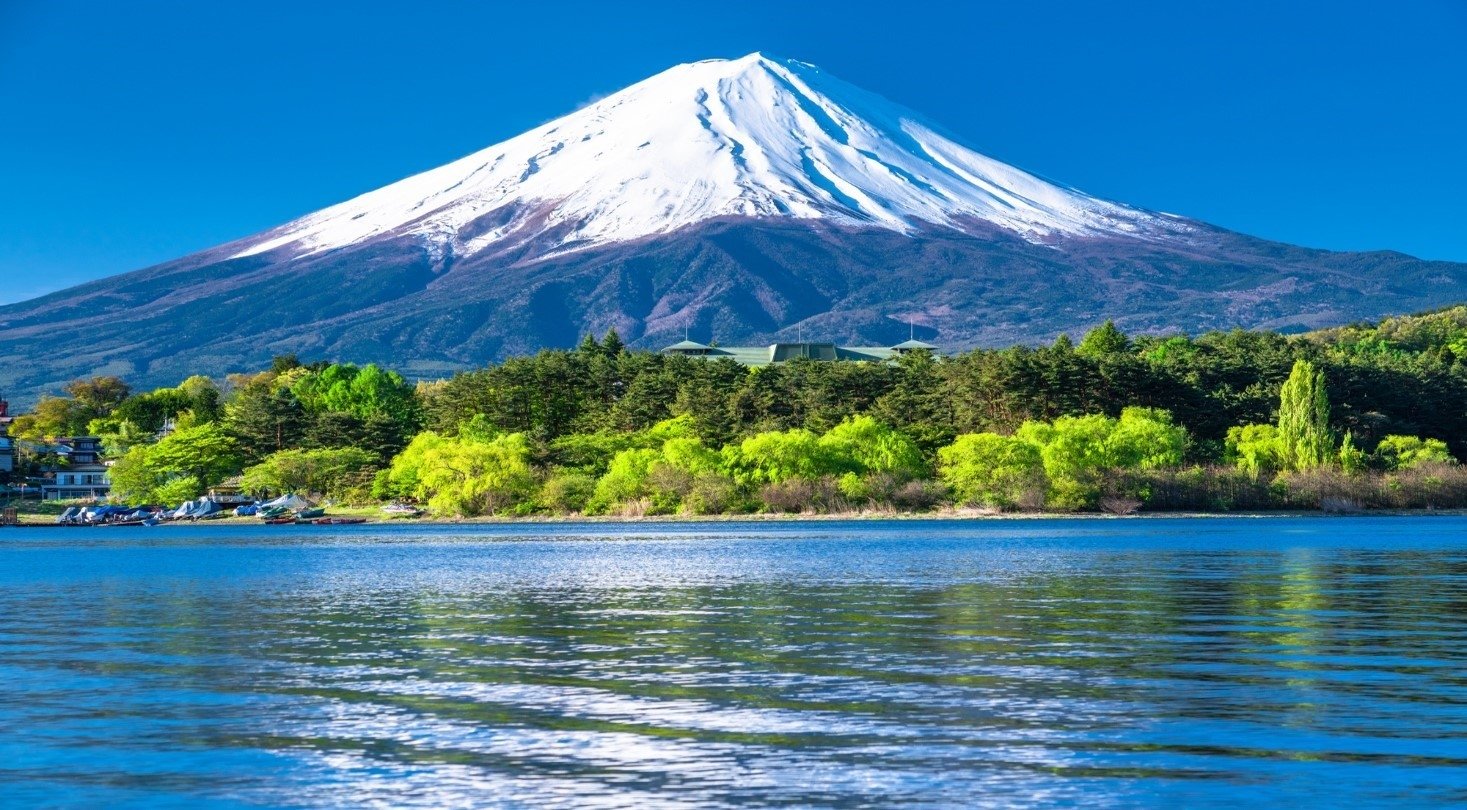Top 30 Unknown and Interesting Facts About Mount Fuji
In addition to being the highest peak in Japan, Mount Fuji, which is situated on the island of Honshu, is also one of the most well-known and culturally significant monuments worldwide. Mount Fuji is a breathtaking stratovolcano that rises 3,776 meters (12,389 feet) and is popular with hikers, tourists, and photographers because of its cultural significance and symmetrical beauty.

Mount Fuji, which is a component of the Fuji-Hakone-Izu National Park and is situated on Honshu Island about 100 kilometers southwest of Tokyo, has been a UNESCO World Heritage Site since 2013. For centuries, its flawless symmetry has served as an inspiration to poets, philosophers, and artists, making it a classic motif in Japanese art, especially in woodblock prints like Hokusai’s well-known “Thirty-Six Views of Mount Fuji” series.
Mount Fuji is revered as a sacred peak in Japanese culture. It is a pilgrimage site for persons pursuing enlightenment and is connected to the Shinto religion, having shrines devoted to the mountain’s spirit at its base. The mountain itself is said to represent a portal between the divine and the earth, and climbing it has long been a spiritual experience.
The Yoshida Trail, which goes to the top and provides views of the surrounding landscapes, is the most popular path for the thousands of climbers that ascend the peak each summer.
The natural beauty of Mount Fuji is equally as captivating as its cultural significance. Hikers and visitors flock there to take in the breathtaking views during the warmer months. The ascent, which usually takes five to ten hours, depending on the route, offers stunning views, shifting terrain, and the rare opportunity to witness Goraiko, the sunrise from the peak. From fall to spring, the mountain is frequently blanketed with snow, which enhances its spectacular look.
The best time of year to go trekking is from early July to early September, which is also Mount Fuji’s official climbing season. Conditions are severe outside of this time, and the ascent is made more hazardous by snow and ice.
In this blog post, we’ll uncover 30 intriguing and lesser-known facts about Mount Fuji that will make you appreciate this natural wonder even more.
1. Mount Fuji is an Active Volcano
Although Mount Fuji is not currently erupting, it is an active volcano. Its last eruption took place in 1707 during the Edo period, and it is classified as a “stratovolcano,” meaning it’s made up of layers of hardened lava and ash from past eruptions.
2. It’s the Highest Peak in Japan
Standing at 3,776 meters (12,389 feet), Mount Fuji is Japan’s tallest mountain. It is significantly higher than any other peak in the country, with many other mountains in Japan reaching only around 2,000 to 3,000 meters.
3. Mount Fuji is Part of a UNESCO World Heritage Site
In 2013, Mount Fuji was designated a UNESCO World Heritage Site, recognized for its cultural significance as well as its natural beauty. It is celebrated not only for its geological features but also for its role in Japanese art, spirituality, and history.
4. A Sacred Mountain for Pilgrims
Mount Fuji has been considered sacred for centuries. Pilgrims have been ascending its slopes for religious reasons since the 7th century, believing the summit to be a holy place. The mountain is associated with the Shinto religion and was a site for rituals and offerings.
5. The First Ascent Was in the 7th Century
While the exact date of Mount Fuji’s first ascent is unclear, it’s believed that the first recorded climb occurred in the 7th century. Early climbs were done for religious and spiritual reasons, and climbing the mountain was seen as an act of purification.
6. The Mountain is a Popular Destination for Climbers
Each year, more than 300,000 climbers attempt to reach the summit of Mount Fuji, especially during the official climbing season, which runs from early July to early September. The mountain offers several routes to the top, each with varying degrees of difficulty.
7. Mount Fuji Has Five Beautiful Lakes
Surrounding Mount Fuji are five pristine lakes, known as the Fuji Five Lakes. These include Lake Kawaguchi, Lake Yamanaka, Lake Saiko, Lake Shoji, and Lake Motosu. The lakes offer stunning views of the mountain and are popular spots for boating, fishing, and camping.
8. It’s a Symbol of Japan’s Aesthetic Philosophy
Mount Fuji is often depicted in traditional Japanese art, representing the country’s deep respect for nature. Its iconic shape is featured in famous artworks, such as Katsushika Hokusai’s “Thirty-Six Views of Mount Fuji.” The mountain represents the perfect balance of nature and is seen as a symbol of tranquility and beauty.
9. Mount Fuji’s Perfect Symmetry
One of Mount Fuji’s most recognizable features is its near-perfect conical shape. This symmetrical form is not only aesthetically pleasing but also a result of its volcanic structure, making it one of the most beautiful mountains in the world.
10. The Mountain Is Made Up of Three Volcanoes
Mount Fuji is actually composed of three volcanic cones: Komitake, Ko-Fuji, and the current Fuji-san. The oldest cone, Komitake, is the lowest and most weathered. Ko-Fuji is the middle cone, and Fuji-san, the present-day peak, is the youngest and most active.
11. The Name “Fuji” May Have a Mystical Origin
The name “Fuji” is believed to have several possible meanings. Some scholars argue that it comes from the Ainu word “Fuchi,” meaning “fire,” while others suggest it is derived from the Japanese words “fujin” (god of fire) or “fuji” (immortal). The origin of the name adds to the mountain’s mysterious aura.
12. Mount Fuji’s Crater is Huge
The summit of Mount Fuji contains a massive crater, which measures about 500 meters (1,640 feet) in diameter. Inside the crater, visitors can find several small lakes and a unique ecosystem.
13. It Experiences Frequent Earthquakes
Due to its status as an active volcano, Mount Fuji lies within the Pacific “Ring of Fire,” an area known for frequent seismic activity. Earthquakes are common in the region, and volcanic tremors occasionally shake the mountain.
14. There Are Temples and Shrines on Mount Fuji
Scattered across Mount Fuji are numerous Shinto shrines and Buddhist temples, serving as places of worship and offering. These religious sites have been built to honor the mountain’s spiritual significance.
15. Mount Fuji Has Its Own “Climbing Season”
The official climbing season for Mount Fuji is quite short, typically from early July to early September. This is when the mountain is most accessible, with the weather being less severe. Outside of these months, the mountain is often closed due to heavy snowfall and dangerous conditions.

16. The Mountain Is Home to Unique Wildlife
Despite its harsh conditions, Mount Fuji is home to several species of wildlife, including the Japanese brown bear, deer, and various birds. There are also many types of alpine plants, which are adapted to the mountain’s altitude and weather.
17. Fuji’s Snow-Capped Peak is Iconic
One of Mount Fuji’s most recognizable features is its snow-capped peak, visible from miles away during the colder months. The snow typically starts to accumulate in late autumn and melts by early spring. The snow adds to the mountain’s mythical and majestic image.
18. Mount Fuji’s Symbolism in Japanese Culture
In Japanese culture, Mount Fuji is a symbol of strength, resilience, and beauty. It is frequently depicted in poetry, paintings, and songs. The mountain is also an important subject of pilgrimage, with many traveling to its slopes to seek enlightenment or personal growth.
19. Mount Fuji Has Inspired Global Artists
The beauty of Mount Fuji has captured the imaginations of artists around the world. Not only is it featured in famous Japanese artworks, but the mountain has also inspired painters, photographers, and poets worldwide. Its universal appeal lies in its majestic presence and cultural significance.
20. Mount Fuji Has a Long History of Eruptions
While Mount Fuji is quiet now, it has had a long history of eruptions. Its eruptions have occurred at intervals of hundreds of years, with the most recent eruption, the “Hōei eruption,” taking place in 1707. The eruption was triggered by the Hōei earthquake and sent ash as far as Edo (now Tokyo).
21. Mount Fuji is Part of a National Park
Mount Fuji is located within the Fuji-Hakone-Izu National Park, which is known for its natural beauty, hot springs, and scenic vistas. The park covers a wide area, attracting both nature lovers and tourists from around the world.
22. The Mountain’s Influence on Japanese Literature
Mount Fuji has influenced many Japanese writers, who have used the mountain as a metaphor for life, death, and spirituality. Famous Japanese authors like Yukio Mishima and Haruki Murakami have referenced Mount Fuji in their works.
23. Fuji’s Volcanic Ash is Highly Fertile
The volcanic ash that Mount Fuji deposits on the surrounding land is rich in minerals, making the soil incredibly fertile. This has made the region ideal for agriculture, particularly the cultivation of fruits like peaches and grapes.
24. There’s a Legend About the Mountain’s Creation
Japanese folklore has many stories about the creation of Mount Fuji. One popular myth involves the goddess Konohanasakuya-hime, who is said to have created the mountain as a symbol of her eternal love for her husband. This legend has deep cultural resonance for the people of Japan.
25. Mount Fuji’s Significance in Shinto Rituals
In Shinto, Mount Fuji is regarded as the dwelling place of the goddess Sengen-sama. Many Shinto rituals are held on the mountain, particularly during the climbing season. Pilgrims climb the mountain to honor the goddess and seek spiritual purification.
26. The Mountain is Known for Its “Fujisan” Cloud
The “Fujisan Cloud” is a unique cloud formation that can sometimes be seen surrounding the peak of Mount Fuji. This cloud is often photographed, and its presence adds an ethereal beauty to the already majestic mountain.
27. Mount Fuji Has Its Own Road
The “Fujigoko Road” is a scenic drive that offers panoramic views of Mount Fuji and the Fuji Five Lakes. The road connects various towns and scenic spots around the mountain, making it a popular route for tourists looking to explore the area.
28. The Mountain is an Important Site for Photography
Due to its striking beauty, Mount Fuji is one of the most photographed mountains in the world. It frequently appears in postcards, calendars, and tourism brochures, showcasing its iconic shape and surrounding landscapes.
29. Mount Fuji is a Popular Spot for Night Hiking
For those looking for a unique experience, night hiking is becoming increasingly popular on Mount Fuji. Climbers ascend the mountain overnight to reach the summit in time for sunrise, known as the “Goraiko” – a breathtaking moment that symbolizes renewal and hope.
30. The Mountain is Part of Japanese Popular Culture
Mount Fuji regularly appears in popular culture, including films, television shows, and anime. It is often portrayed as a symbol of Japan’s national identity, representing both the country’s beauty and the spiritual depth of its culture.


